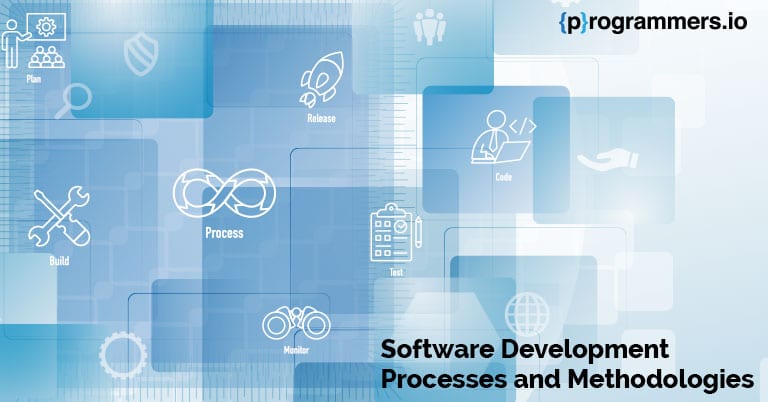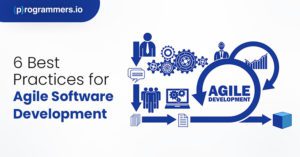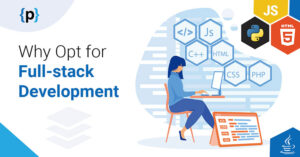Software Development Processes and Methodologies
Do you use a software development methodology to improve your output?
Software development methodology refers to a process or set of processes used in software engineering. It is a framework that is used to plan, structure, and manage the process development of an information system. Here is a brief overview of the most well recognized and used software development methodologies.
1. Waterfall
Waterfall is one of the oldest software development methodologies. It has a linear and rigid structure. You can only start a new stage when the last one is completed. Thus, you move linearly from one stage to another. Bear in mind that you can’t return to an early stage. Since Waterfall presupposes a fixed sequence of completed tasks, it is easy to understand and implement it.
AdvantagesWaterfall is analytical, gradual, and simple.
DisadvantagesIt is ideal for scenarios when you have received exact needs or requirements on how to create a system. However, ongoing or longer projects will suffer in quality.
2. Agile
This methodology prioritizes the product/project. For this reason, it presupposes different continuous alterations based on customer and user feedback, along with internal changes associated with the efforts of developers.
Agile is devoid of inflexible frameworks that were prevalent in older methodologies. Instead, it divides the working process into short time boxes, producing real results and feedbacks in no time.
Advantages
Agile fixes the issues at an early stage, ensuring a high quality of the final product.
Disadvantages
Agile fixes the issues at an early stage, ensuring a high quality of the final product.
3. Lean Development
The core focus of lean development is to generate value for the client. As per Lean, if something can add value, it must be implemented on a priority basis. If it does not provide any value, then it should be discarded instantly. This approach aims at minimizing losses. Hence, the entire project is reviewed considerably to save time and minimize costs. Since value is the core element, feedback plays a pivotal role, ensuring that all the actions are taken on time.
Advantages
It works well for projects that have rigid time limitations or have shoe-string budgets.
Disadvantages
A team’s working capacity influences success. Excessive flexibility can cause others to lose track.
4. Extreme Programming
Extreme programming presupposes significant flexibility and promotes customer participation, which makes it ideal for unstable projects. It enhances the software quality due to its capability to adapt to constantly evolving demands. In addition, communication and constant feedback are critical to a happy and efficient team environment.
Advantages
The increased customer involvement and instant feedback contribute to high-quality products.
Disadvantages
Efficiency depends on those who are involved. There is also the risk of vague future outcomes.
5. Feature Driven Development
Feature driven development is an incremental and iterative approach to software development. It is derived from the Agile methodology and is seen as one of the several ways to adopt it. FDD is all about delivering working software regularly and prioritizing a client-centric approach. This makes it well-suited for small development teams.
Features are the fundamental element of FDD. These are client-valued pieces of work that must be delivered after every two weeks. If a feature takes more time to complete, it should be split into multiple features. This process is repeated until features are designed within the two-week period.
Advantages
It is a good fit for large projects. The pre-determined standards make the development procedure more simplified. Besides, it empowers developers having suitable expertise and experience to manage the tasks on their own.
Disadvantages
Small organizations will struggle to apply FDD. It is dependent on the leading developers to track the process. Since it has a strict deadline, it is tough to give any guarantee to the client.
6. Rapid Application Development
Rapid application development (RAD) is a condensed development process that creates quality systems at an affordable rate. It enables engineers to rapidly adjust to evolving requirements in a fast-paced and constantly evolving market. This ability to make quick adjustments makes it affordable.
The RAD method comprises four phases: requirements planning, user design, construction, and cutover.
Advantages
RAD is effective for projects that have a properly defined user group and a well-defined business objective. It is also valuable for time-sensitive small and medium-sized projects.
Disadvantages
RAD can be executed through a strong and reliable team composition with skilled users and developers who have in-depth knowledge about the application domain. Detailed expertise is required in a condensed timeline where each construction phase needs a separate approval. Companies that don’t fit these requirements will find it hard to work with RAD.
7. Scrum
Scrum is split into sprints. All the tasks and activities for sprints are decided beforehand and are reviewed after this period. This approach identifies issues at an early stage and helps to resolve them quickly. Scrum’s flexibility makes it convenient for projects that have constantly changing requirements.
Advantages
The team maintains control of all the decision-making.
Disadvantages
The costs in Scrum can vary from case to case. It is difficult to use this approach for larger projects.
Final Thoughts
The software processes and methodologies mentioned above are essential and used for different software development projects. These methodologies work well in specific projects based on the project’s nature. Often, one methodology is well-suited in a certain project, but it may not be ideal for another project. Each of them has its pros and cons. That is why software developers understands how these methodologies & choose wisely them for their projects. If you can’t make up your mind, reach out to us. Our experts will help you choose the right software methodology.
How can we help you?
We have hundreds of highly-qualified, experienced experts working in 70+ technologies.









